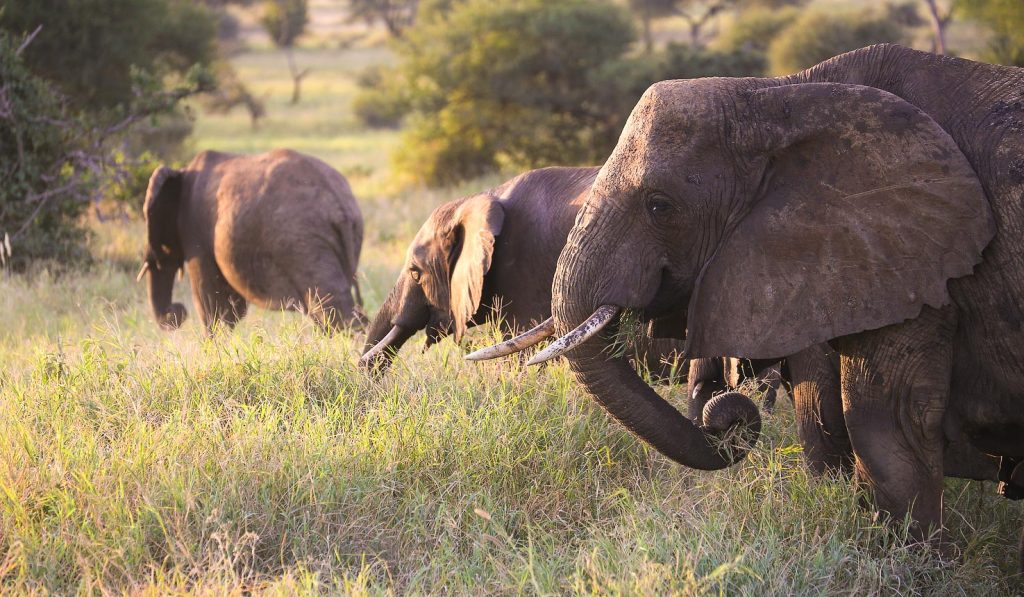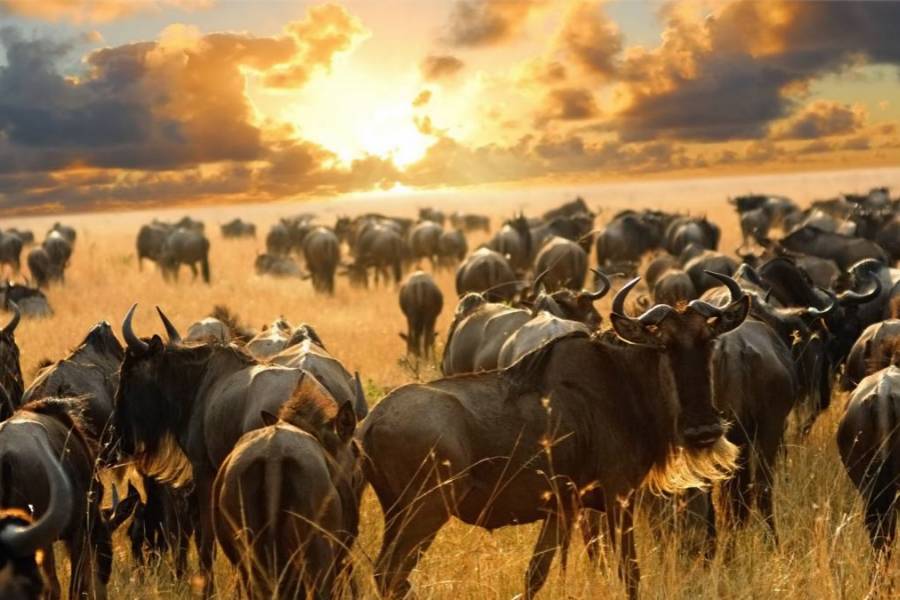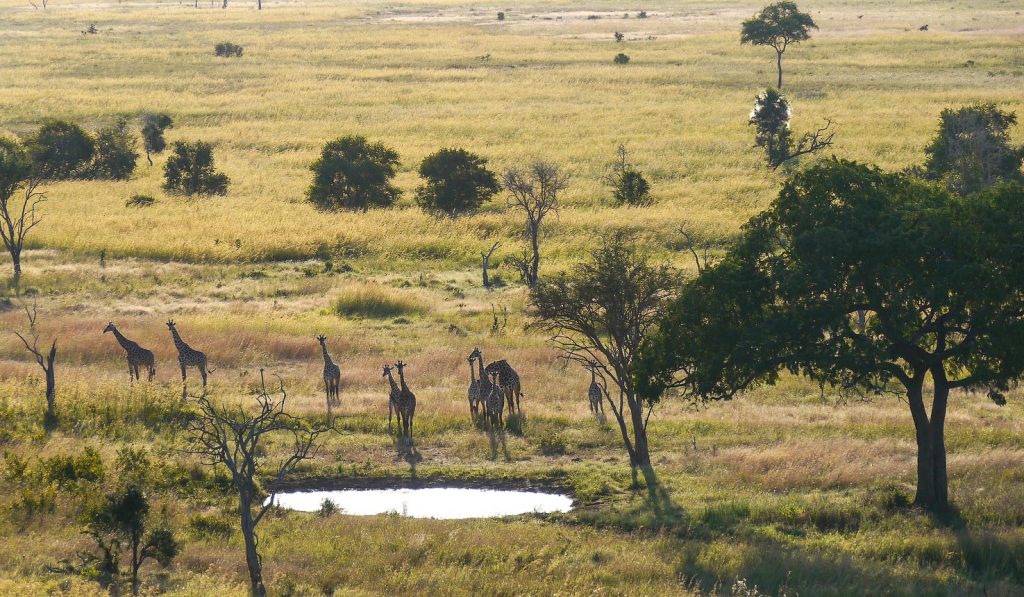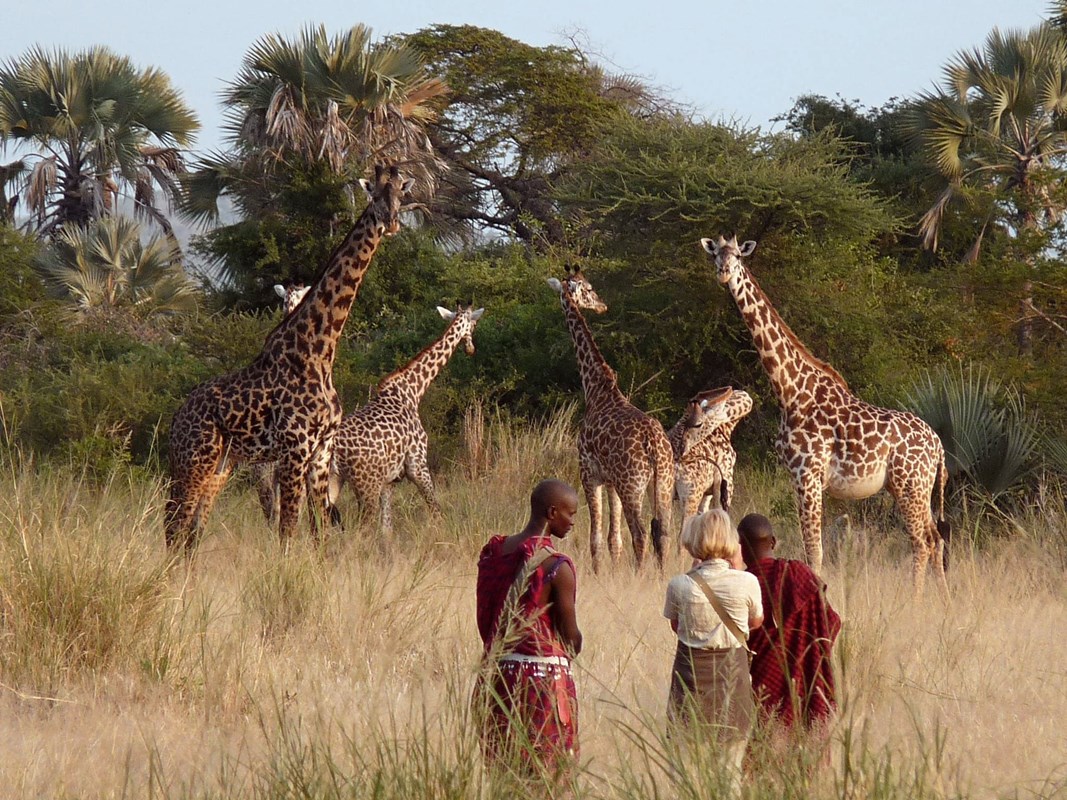What to Expect on a Tanzania Safari
Tanzania, located in East Africa, is a country renowned for its breathtaking landscapes, rich cultural heritage, and abundant wildlife. It is home to some of the most iconic natural wonders in the world, including Mount Kilimanjaro, Africa’s highest peak, and the Serengeti National Park, famous for the Great Migration. Tanzania’s diverse ecosystems range from the lush rainforests of the Eastern Arc Mountains to the Serengeti’s arid plains and the Zanzibar’s pristine beaches.
The country’s commitment to conservation and sustainable tourism has made it a haven for wildlife enthusiasts and nature lovers. Tanzania boasts an impressive array of national parks, game reserves, and marine parks, each offering unique opportunities to observe wildlife in their natural habitats.
Wildlife in Tanzania
The Big Five: Crown Wildlife Encounters of any African Safari
Tanzania is one of the best places in Africa to see the Big Five: lion, leopard, elephant, buffalo, and rhino. These iconic animals are often the highlight of any safari, and Tanzania’s national parks provide ample opportunities to spot them.
- Lions: Known as the kings of the jungle, lions are commonly found in the Serengeti and Ngorongoro Crater. The Serengeti’s vast plains are home to large prides of lions, offering incredible sightings.

- Leopards: Leopards are elusive and solitary, but they can be spotted in the Serengeti, Ruaha National Park, and the Selous Game Reserve, often lounging in trees or stealthily stalking their prey.
- Elephants: Tanzania boasts significant elephant populations, particularly in Tarangire National Park and the Selous Game Reserve. These gentle giants can often be seen grazing in large herds.

- Buffalo: The African buffalo is a common sight in many of Tanzania’s national parks. They are known for their unpredictable nature and formidable horns.
- Rhinos: Rhinos are more challenging to spot due to their endangered status. The Ngorongoro Crater and the Serengeti have black rhino populations, while Mkomazi National Park is a sanctuary for both black and white rhinos.

The Great Migration
One of the most spectacular wildlife events in the world is the Great Migration, which takes place in the Serengeti National Park. Each year, over 1.5 million wildebeest, accompanied by hundreds of thousands of zebras and gazelles, embark on a journey in search of fresh grazing lands. This epic migration is fraught with danger as the animals face predators like lions, cheetahs, and crocodiles, particularly during the treacherous river crossings.
The Great Migration offers an unparalleled opportunity to witness the raw power and beauty of nature. The best times to see the migration in Tanzania are between November and July, depending on the animals’ movement patterns.

Diverse Ecosystems and Habitats
Tanzania’s diverse ecosystems support a wide variety of wildlife species:
- Savannahs and Grasslands: The Serengeti, Ngorongoro Crater, and Ruaha National Park are characterized by expansive savannahs and grasslands, home to grazing herbivores like zebras, giraffes, and antelopes, as well as their predators.
- Woodlands and Forests: Tarangire National Park and the Selous Game Reserve feature woodlands that provide habitat for elephants, leopards, and various bird species. The Eastern Arc Mountains are rich in biodiversity, with many endemic species.
- Wetlands and Waterways: The wetlands and waterways of Katavi National Park and the Rufiji River in the Selous Game Reserve are teeming with hippos, crocodiles, and a variety of waterbirds.
Coastal and Marine Life: Tanzania’s coastline and the Zanzibar Archipelago offer stunning marine biodiversity. Coral reefs, dolphins, sea turtles, and vibrant fish species can be found in the coastal waters, making it a paradise for snorkeling and diving enthusiasts.

Birdlife
Tanzania is a bird watcher’s paradise, with over 1,100 bird species recorded. From the vibrant lilac-breasted roller to the majestic fish eagle, the country’s diverse habitats support an incredible variety of birdlife. Notable birding spots include the Serengeti, Tarangire, and the wetlands of Lake Manyara National Park.
Conservation Efforts
Tanzania’s commitment to conservation is evident in its extensive network of protected areas and national parks. The government, along with various conservation organizations, works tirelessly to preserve the country’s natural heritage and protect endangered species. Efforts include anti-poaching initiatives, community-based conservation projects, and wildlife corridors to ensure the safe movement of animals.
Conclusion
Tanzania’s wildlife is a testament to the country’s natural beauty and ecological diversity. From the iconic Big Five to the awe-inspiring Great Migration, Tanzania offers unparalleled opportunities to experience wildlife in its most authentic form. Whether traversing the savannahs of the Serengeti, exploring the woodlands of Tarangire, or diving into the azure waters of Zanzibar, Tanzania promises a wildlife adventure like no other.
So, pack your binoculars, prepare your camera, and get ready to embark on an unforgettable journey through Tanzania’s wild landscapes.

